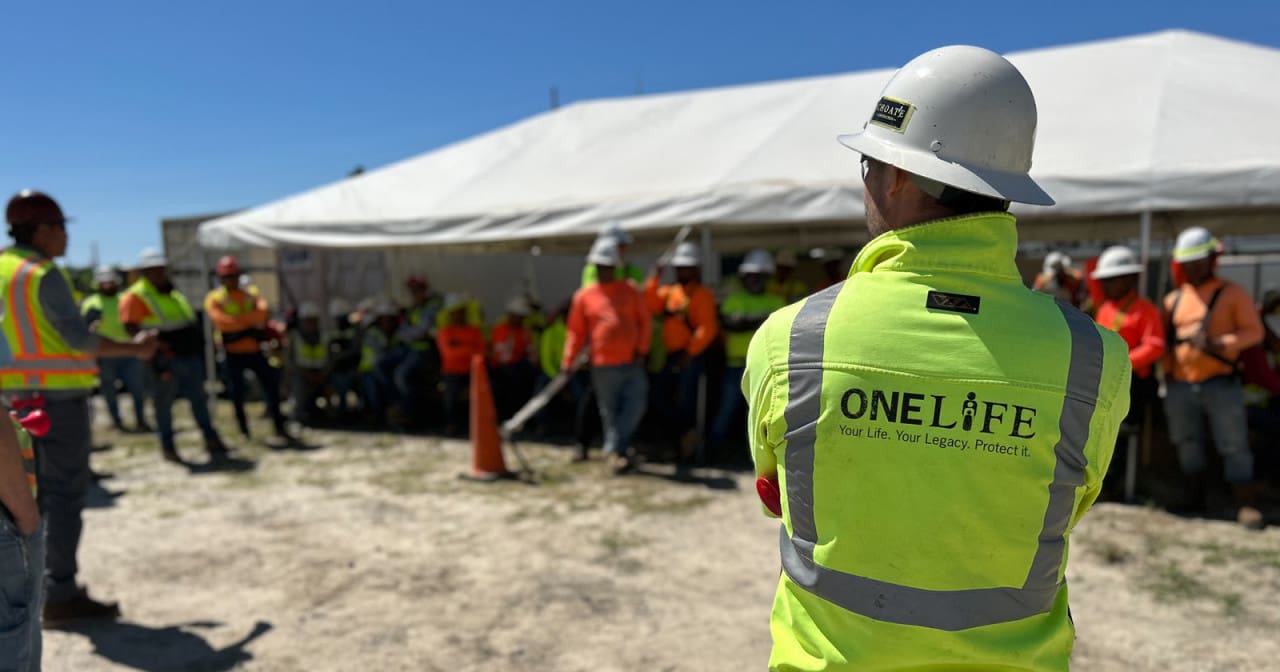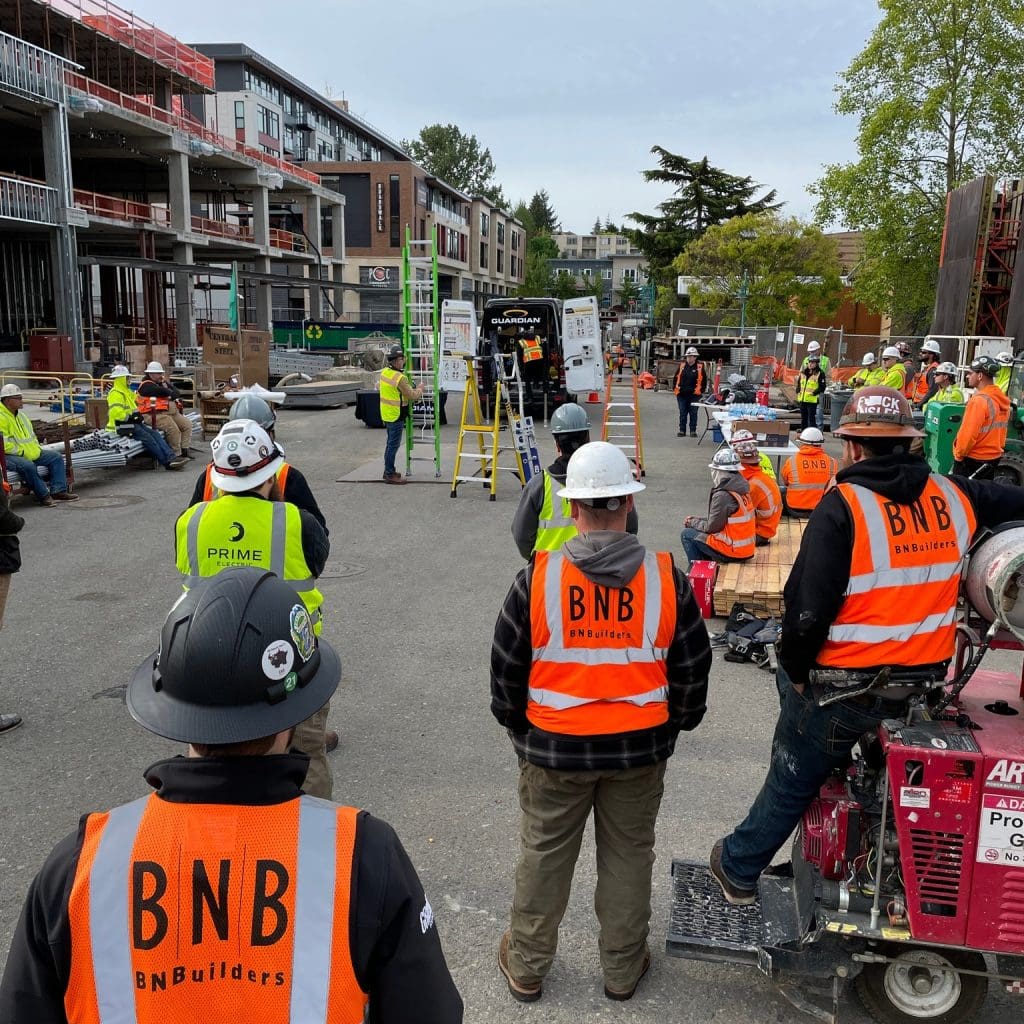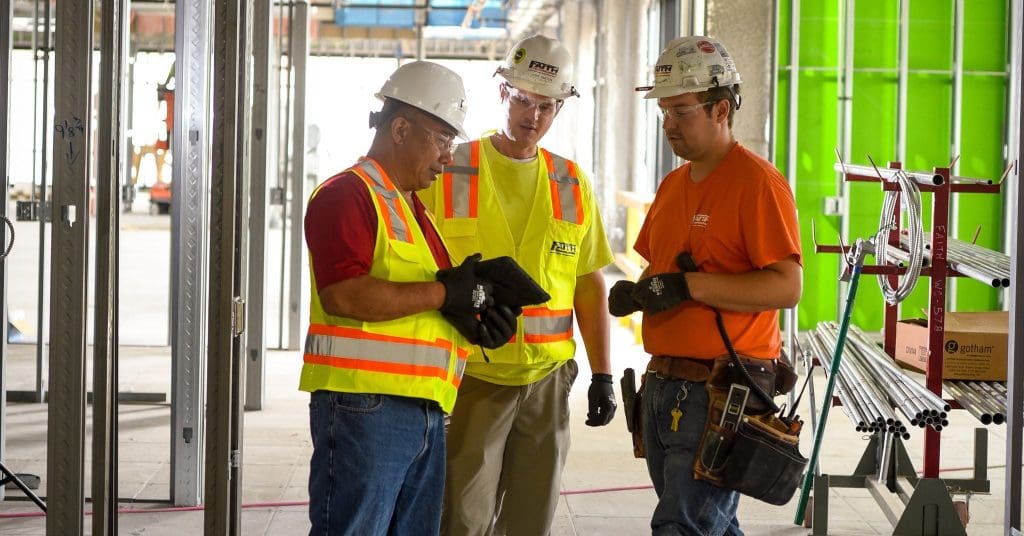
The construction industry faces many threats that put its workers at risk and as a result, more construction firms are investing in a culture of safety to protect their employees. Each year, the Associated General Contractors of America awards construction firms that excel in safety performance with Construction Safety Excellence Awards.
These winners aren’t selected solely by their frequency rates. AGC also reviews the company’s employee participation, safety training, work site hazard identification and control and safety program innovation.
Take a look at three of AGC’s safest contractors in America for 2022 and some of their keys to keeping their teams safe.
Choate Construction
Based in Nashville, Tennessee, Choate Construction is an employee-owned firm that has six regional offices and over 500 employees. The firm specializes in preconstruction services, construction services, sustainability and interior construction. Like many landscape companies, they got their start in 1989 with just one old truck.
Choate Construction takes the attitude that to err is human and they continue to work to engineer out the potential for risk. They utilize their Risk Management Information System to predict trends in risk and alter their processes to prevent incidents before they occur.
They have a three-pronged approach to safety where they address the technical, behavioral and personal aspects that impact proper safety performance. The company makes a point to regularly refine their safety program and integrate the latest safety innovations into their policy and procedures.
Some of Choate Construction’s notable innovations include their guardrail system and usage of drones. A Choate superintendent developed the guardrail system when he wanted to find a way to keep workers safe on patios without relying on tying off. The Pedestal-Mounted Temporary Safety Rail Stanchions can be adjusted with the progress of the project, eliminating fall hazards while the top layer of concrete for balconies is placed.
The system is reusable from jobsite to jobsite and is able to withstand more than the 200 lbs. of weight required by OSHA standards.
Choate also utilizes Skydio drones to conduct rooftop fall hazard inspections, eliminating fall hazards to personnel who would have needed PPE to achieve the same result. They also use programs like DroneDeploy and Propeller Aero to create project safety logistic plans from real-time aerial imagery.
BNBuilders
BNBuilders, based in Seattle, Washington, is another employee-owned general contractor. They have five offices and over 1,000 employees with a focus on the California, Colorado and Washington construction markets. They specialize in corporate campuses, life science facilities, education buildings, mixed-use & residential, retail & hospitality, civic, technology & manufacturing, tribal and healthcare spaces.

When the company doubled their overall staff size in the span of two years, they increased their safety department as well from eight to 30 team members to ensure safety remains a top priority. BNBuilders’ executive leadership team doesn’t just support safety programs but actively solicits new advice and looks for ways to improve. They are involved in daily discussions of hazards and issues. Every Monday, senior field leadership, senior superintendents, and regional safety managers review and discuss all high-risk activities.
“The culture at BNB is what sets us apart from our competitors and our safety culture is second to none,” says Brad Bastian, president and co-founder of BNBuilders. “We invest in our safety program from the top down and that level of buy-in allows our safety programs to be so successful.”
To streamline safety reporting, BNBuilders has worked to eliminate redundant processes so it is easier for frontline and office staff. They have moved many of their current forms to a digital format, including their Incident Reporting, Daily Safety Inspection, and Sign-in Sheets, with plans to expand this process to their inspection checklists and Pre-Task Plans.
Having digital forms makes tracking easier and reduces the number of potential mistakes from transcription. They can analyze positive or negative trends as a company. The company has also created digital forums where employees are encouraged to share their feedback. Employees can vote on a list of pre-set questions after BNBuilders provides training on their safety program.
The company also has an On-The-Spot recognition program where workers are recognized for going above and beyond their normal duties to ensure a safe working environment.
Faith Technologies
Founded in 1972, Faith Technologies specializes in electrical planning, engineering, design and construction. Headquartered in Menasha, Wisconsin, this company has 13 office locations and more than 2,500 employees.
The firm has an experience modification rate of 0.49, which is considerably lower than the industry average of 1.00. Their employees undergo 20+ hours of rigorous safety training every year. Faith Technologies has been working towards having zero injuries as their first core value is focused on keeping people safe.

Faith Technologies’ employees have worked more than 26 million hours without a lost time incident. The company never takes the attitude of feeling they’ve done ‘enough’ when it comes to safety. Some of the ways they go about making safety part of their company culture is by asking safety-related questions during the hiring process. New employees undergo mandatory drug testing, background checks, and OSHA 10-hour training before stepping on a job site.
Faith Technologies also uses Bid Smart to grade their clients and customers to make sure they have the same safety standards. Each project also goes through a safety design meeting where the team engineers or eliminates hazards or risks prior to dealing with them on site.
Some of Faith Technologies’ other safety strategies include hosting quarterly innovation awards. Individuals or teams who improve a task or project, including safety, are scored on identified criteria with cash rewards up to $2,500. Another one of their best practices is to use ladders last as they recognize that falls from heights are one of the leading causes of workplace injuries. They will either design out work at heights or incorporate lifts to use instead.
The company also noticed a pattern of safety incidents caused by knives on the jobsite so they eliminated fixed-blade knives on their projects. Safer tools and processes were introduced, resulting in 100% reduction of knife-related incidents across sites.
These are just a handful of construction firms that are going above and beyond in their safety efforts. While the landscape industry is full of notable companies who emphasize safety, don’t forget to look outside the industry for inspiration and fresh new ways to keep your employees engaged and safe.
This article was published in the September/October issue of the magazine. To read more stories from The Edge magazine, click here to subscribe to the digital edition.

